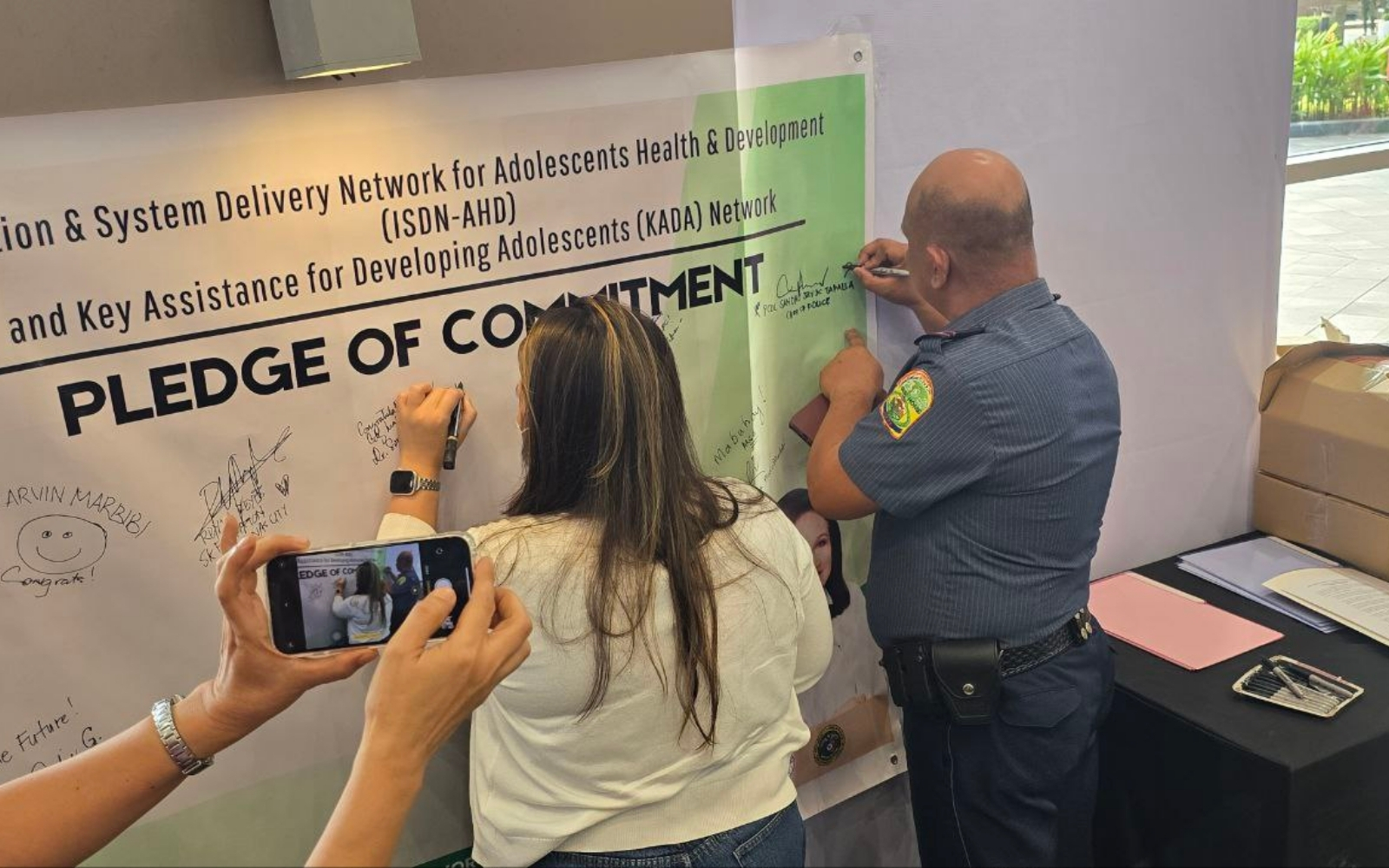Building a Stronger Support System for Las Piñas Youth
Stories

Las Piñas City has come a long way from its humble beginnings as a fishing village. Now a bustling urban center in southern Metro Manila, the city’s population reached 628,652 by 2025, according to the Department of Health. Among these, 107,113 adolescents aged 10 to 19—or 17% of the population—represent both a major opportunity and a growing challenge for the city.
Las Piñas has built a strong infrastructure for adolescent health: 30 health centers, all accredited as Level 1 Adolescent Friendly Health Facilities, three Teen Centers, a social hygiene clinic, and a birthing clinic. But behind this network was a serious problem: services for young people were often uncoordinated.
Programs from health, education, and social welfare sectors operated in silos. This meant young people often had to navigate confusing or disconnected services—leaving many without the help they needed.
A Closer Look at the Numbers
City records show the adolescent birth rate (ABR) rose from 16 births per 1,000 among girls aged 15 to 19 in 2021 to 18 in 2022. But what was more alarming was the gap between reported pregnancies and actual deliveries. Dr. Justine Hernandez from the City’s Adolescent Health and Development Program explained, “Many pregnant adolescents, fearing stigma and judgment, sought to give birth outside the city or concealed their pregnancies entirely, often delivering in distant provinces.”
This trend distorted data and revealed that many young mothers did not feel safe or supported locally. The modern contraceptive prevalence rate (mCPR) stood at just 12% in 2022.
Without a system that connects services, the city risked letting more adolescents face health issues, early pregnancy, and long-term social difficulties.
Why the System Was Not Working
Three key gaps held the city back:
- No unifying policy to align different sectors and prioritize adolescent welfare.
- No clear leader or champion for coordinated action.
- No referral system to guide adolescents from one service to another when needed.
These missing pieces led to duplication, confusion, and many young people falling through the cracks.
Related articles:
- Eight Cities Share Success in Family Planning and Adolescent Health
- Cities Lead the Way in Family Planning and Adolescent Health—Webinar Series to Spotlight Local Innovations
A Turning Point: The Challenge Initiative
In 2023, Las Piñas joined The Challenge Initiative (TCI)-Philippines, a global program co-managed by the Zuellig Family Foundation, the Bill and Melinda Gates Institute for Population and Reproductive Health, and Bayer, with technical support from the John Hopkins Bloomberg School of Public Health.
This partnership gave Las Piñas not just funding, but a framework and technical support to fix the system.
Led by Mayor Imelda Aguilar and City Health Officer Dr. Juliana Gonzalez, the city formed a City Leadership Team (CLT). This brought together the City Health Office, Social Welfare Office, Local Youth Development Office, Public Employment Service Office, the Department of Education, the Philippine National Police, and the Sangguniang Kabataan (SK)—all committed to working together for adolescent health.
Creating the Information and Service Delivery Network (ISDN)
To connect fragmented services for adolescents, Las Piñas created the Information and Service Delivery Network (ISDN)—a system that links health, education, social welfare, and security services into one coordinated referral network.
By 2023, the city developed a referral algorithm and began drafting protocols to ensure that adolescents could easily access the right services, regardless of where they first sought help. Frontline workers were trained to screen adolescent concerns and refer cases—such as mental health issues or adolescent pregnancy—quickly and appropriately.
The process started with mapping all adolescent-serving agencies and assessing service gaps. Then, in December 2023, a three-day workshop facilitated by the Commission on Population and Development (CPD) helped align partners and establish shared referral processes and data-sharing agreements.
With a clear system in place, the city empowered frontliners and introduced monitoring tools to track referrals, improve service delivery, and ensure accountability across the network.
Strengthening Coordination and Passing Policies
To further institutionalize the work, Las Piñas aligned ISDN with the Department of Health’s Key Assistance for Developing Adolescents (KADA) Network. In September 2024, a local ordinance officially created the KADA Network, ensuring long-term policy support.
The networks were launched on December 6, 2024, complete with service catalogs, referral guides, directories, and resource maps.
Las Piñas did not stop at planning. The city rolled out activities to make the system effective and responsive:
- Regular Adolescent Case Management Conferences help network members jointly solve difficult cases like cyberbullying and sexual exploitation.
- Enhanced Usapan sessions improved counseling, contributing to a steady rise in mCPR.
- Dedicated Family Planning Implementers were deployed to barangays, reaching more adolescents and families directly.
A Model Worth Replicating
Las Piñas backed its reforms with dedicated budgets, policies, and leadership structures. The referral system is now embedded in how the city works—simplifying workflows and ensuring adolescents can get help wherever they first seek it, whether in school, a clinic, or a barangay hall.
Monitoring is led by the Health Promotion Unit, and the CLT regularly reviews progress and listens to feedback from the youth themselves. “These gains translated into better access,” said Dr. Hernandez, “as more families were able to choose and obtain their preferred contraceptive methods at the right time.”
And the results are starting to show. By 2024, ABR had dropped to 13 per 1,000 births among girls aged 15 to 19. Meanwhile, mCPR rose to 19%.
More than just improving services, the city built a model that centers adolescents, builds community trust, and connects systems. From policy to practice, and planning to grassroots action, Las Piñas has become a leading example of how local governments can transform health systems for the next generation.

